This doozy is a Rite-Hite All Steel Kitchen. The complete set cost $27.95. It featured the finest girl-sized modern appliances (he Kenmore Toy Range, Coldspot Toy Refrigerator, and Happi-Time Sink with loads of built-in play value. $55.00 in 1965 had the same buying power as $217.20 in 2018. Pricey toy! It is, I submit, a bitchen kitchen.
In my ongoing compilation of material for Quirky Homes and Gardens, today I am presenting a number of quirky kitchens that I’ve come across in my Quirky Berkeley quest.
I have previously posted on
Today, we’re in the kitchen. And because I have no impulse control when it comes to reduplication, we are looking at bitchen kitchens.

The earliest recorded usage of “bitchen” was by Frederick Kohner in his 1957 novel Gidget.
Kohner, born in what today is Teplice, Czech Republic, was a screenwriter in Hollywood who wrote the Gidget novels based on his daughter Kathy Kohner-Zuckerman.

On with our story – bitchen / quirky kitchens.
It is hard to say what is the most spectacular element at Marcia Donahue‘s place on Wheeler – the garden, her ceramic sculptures, the African and Japanese textiles and Asian art and furniture inside, the bathroom, or the kitchen.
There is nothing like a Mark Bulwinkle painted ceiling to get a kitchen off to a quirky start.
Throw in light fixtures made by Jana Olson of Panache Lighting, alone and in conjunction with Donahue.
For a finish, a group of Beckoning Cats, a.k.a. maneki-neko, a.k.a. 招き猫. The kitchen is bright and warm and more than a little bit quirky. There are parakeets who have something to say most of the time. They agree with each other more than not.
Eni Green has filled her Harper Street yard and home with dachshund art. She is collector. Her kitchen features mostly kitchen appliances and gadgets of the past.
Love the Buster Brown and telephone booth, no?
Richrd F. Outcault created Buster Brown as a comic strip character in 1902s.
Two years later, the Brown Shoe Company adopted Buster, his girlfriend Mary Jane, and his dog Tige as company mascots. “I’m Buster Brown, and I live in a shoe. That’s my dog, Tige, and he lives there, too.”
Dan Wertheimer and Mary Kate Morris live on the northeast corner of Scenic and Cedar. The sculpture and plantings and the painting concentric-ish circles on the western wall scream QUIRKY. So does the kitchen, which is in large part an ode to the original Star Trek. Wertheimer is an astrophysicist who directs Cal’s SETI (Search for Extraterrestria Intelligence). Spoiler alert – there is a lot of Star Trek art and artifacts in the kitchen.
A model of the Starship Enterprise hovers below a skylight.
Morris made this portrait of Captain Kirk and Science Officer Spock with beans and legumes.
She also made this Spock electronics sculpture.
Star Trek Pez dispensers (not photographed and commemorative plates are mounted on and above the picture rail.
Continuing with Spock –
Leaving Star Trek, a few other features:
Morris made this floor painting, inspired by the wall paintings of Sol LeWitt.
The starburst wall clock rocks a VERY quirky vibe.
In my post on Jon Balderston, I call him Quirky Berkeley royalty. He makes arty and quirky furniture, has a killer attic room with many, many toys and packaging and other micro-colletcions, and in his backyard he has the original but not last Hodge Podge Lodge.
His kitchen is muted quirk, tasteful quirk, and great-colors quirk.
Stan Huncilman‘s front yard, back yard, and living room are filled with his quirky sculpture. Why not the kitchen?
I was drawn to Diane Hamm‘s house on McGee by the pig statues outside. I get myself invited inside where I found hundreds, probably thousands of – pig statues. I went into her kitchen. Guess what? Pigs!
She has close to 100 antique lard tins hanging from ceiling hooks in her kitchen. These are her favorites, Farmer Peet. Note the changing logos.
Will Squier buys and sells and collects and take sjoy in kitsch. His kitchen is an ever-changing, ever-evolving kitchen of kitsch. I only have several photos – I hope for more.
Quirky Berkeley is too powerful to stay in Berkeley. The next kitchens were field trips or other non-routine Quirky Berkeley visits. In other words – not physically in Berkeley. If you are an absolute purist, go ahead to the end of the post. If you wanna see some cool quirky kitchens with ideas that you and bring to Berkeley, stick around.
First stop is Mark Bulwinkle’s quonset hut home, gallery, and studio in West Oakland. He has a hella quirky kitchen and two orange cats named Pup, homage to George Foreman naming all of his five sons “George.”
Beat that!
In 2016, I visited Laurel Skye at her home in Arcata. Skye makes art in many ways, but making mosaics is the main event in the main arena. These two photos of her kitchen only begin to suggest the glory.
Skye’s kitchen probably wins the far out award.
These are details from Bob Fischer’s Oakland kitchen.
And – a field trip to Sebastopol led by Susan Alexander to the home of Patrick Amiot and Brigitte Laurent. Art abounds inside and outside their house and, as we will see later, everywhere you look in Sebastopol. The funk factor is Very Elevated in Sebastopol. It generally makes the funkiest parts of Berkeley look positively manicured and uptight. Love it!
I remember more photos of the kitchen than what I find. I hate it when that happens. I have two photos of the painted floor:
One photo of the kitchen table:
And two of kitchen robots:
Check out the yardstick bent on the facing of the robot shelf on the bottom photo.
Our last kitchen is in the home of the late Eli Leon in Oakland. Leon was a world-class collector, especially of quilts. His kitchen hints at his collecting prowess – the color green and meat grinders.
I will add to this post as I remember or come across other quirky kitchens. Here is my running list of elements to quirk up your kitdhen
1. Bright-colored paint – exotic designs
2. Muted-color paint
3. Quirky light fixtures
4. Religious icons (multiple)
5. Random quirk (Buster Brown, telephone booth, etc.)
6. Toys
7. Bright-colored dish ware and bowls
8. Sculpture
9. Collection (such a Hamm;s’ pigs)
10. Art
11. Antique kitchen appliances and utensils.
If you need overall inspiration, return to Mark Bulwinkle’s kitchen There are a lot of ideas buried here. The over-arching element seems to be a willingness to let your freak flag fly in putting together your quirky kitchen.
I showed the post to my friend. He looked a tad wistful.
Three years ago, his kitchen looked like this:
Today:
I never thought that the sleek Danish Modern motif that he has embraced would last forever. I asked, “Do the quirky kitchens make you miss the old days?”
He looked up. “A little. I needed the clean, pure lines based on an understanding of classical furniture craftsmanship coupled with careful research into materials, proportions and the requirements of the human body, but I sometimes miss the chaos.” I appreciate his honesty.
“I Really dig the starburst wall clock.”
Last weekend he found this art deco skyscraper grandfather clock of walnut and black lacquer designed by his fave Raymone Loewy. He was in a little town in Nevada County. The clock is worth at least $6,000. He bought it for $300.
What, though, about the post?








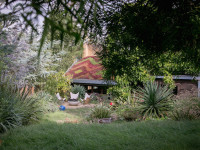









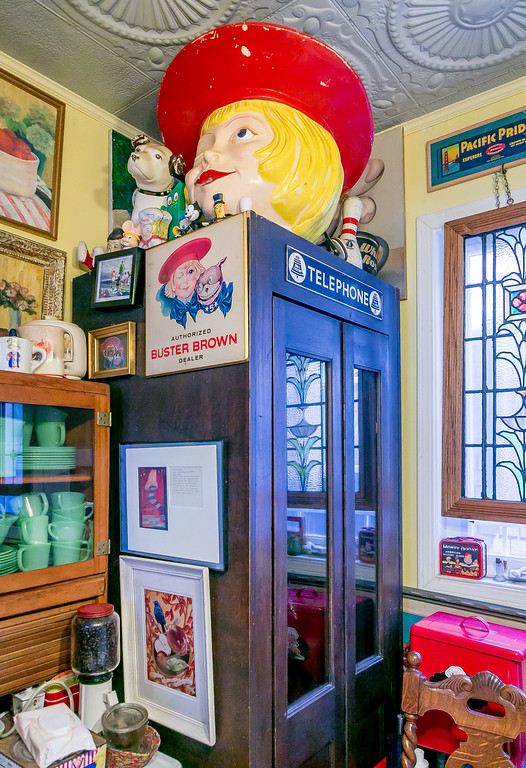




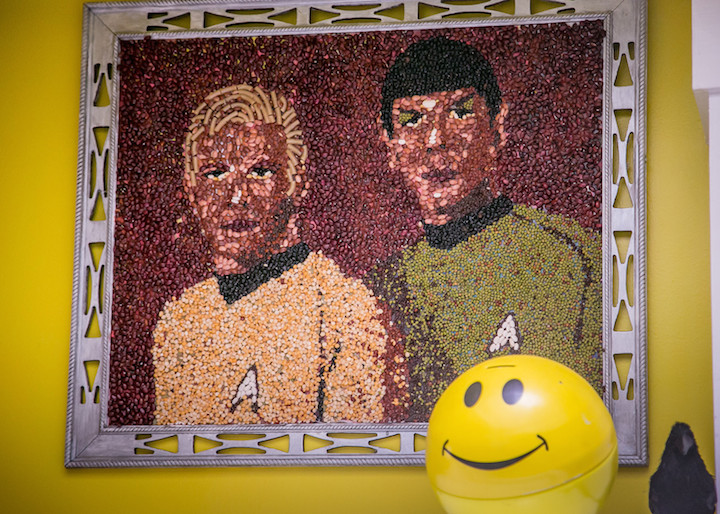








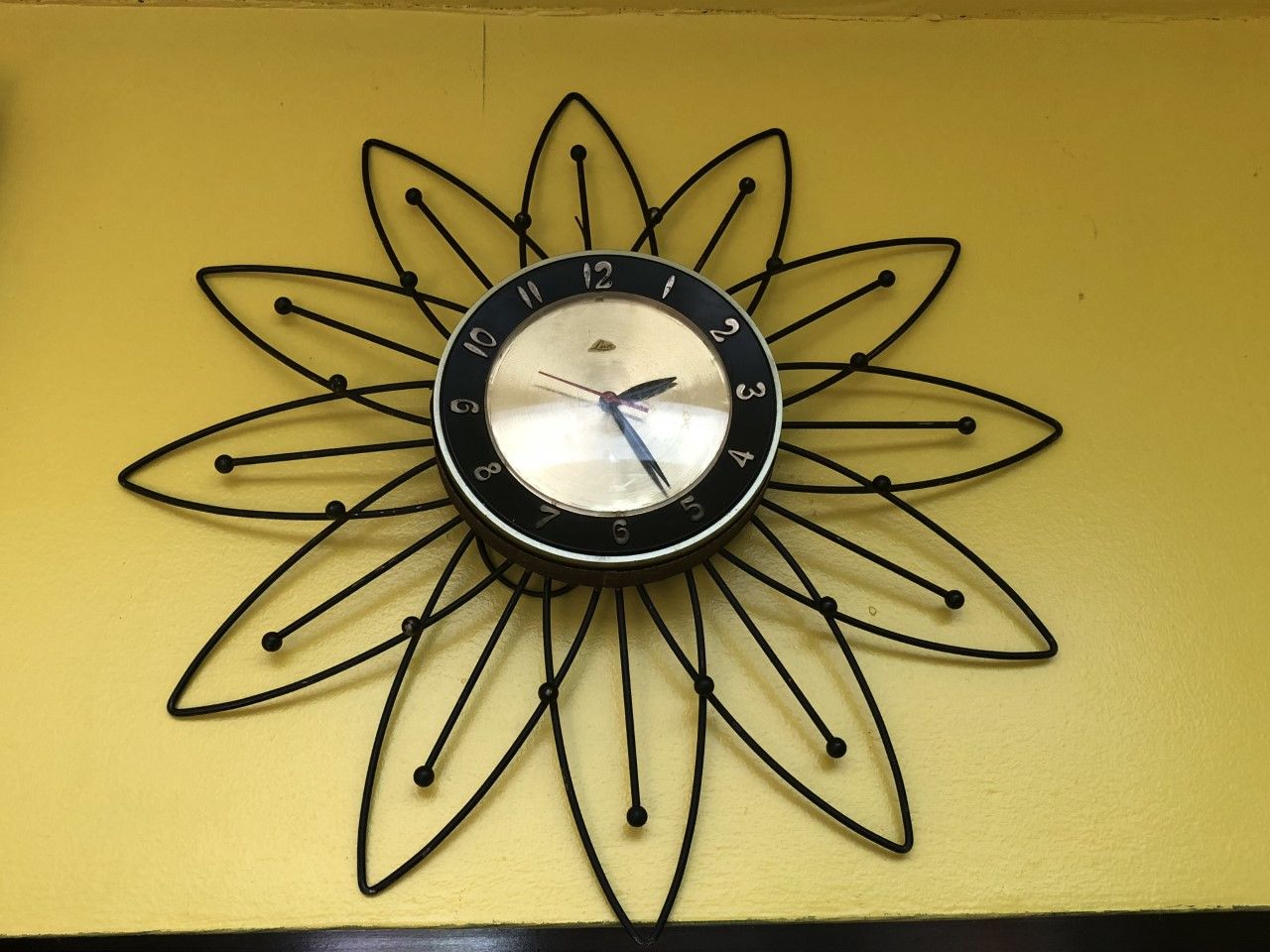











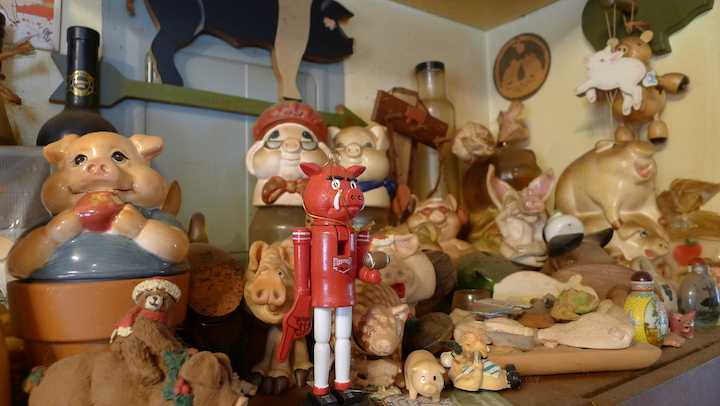


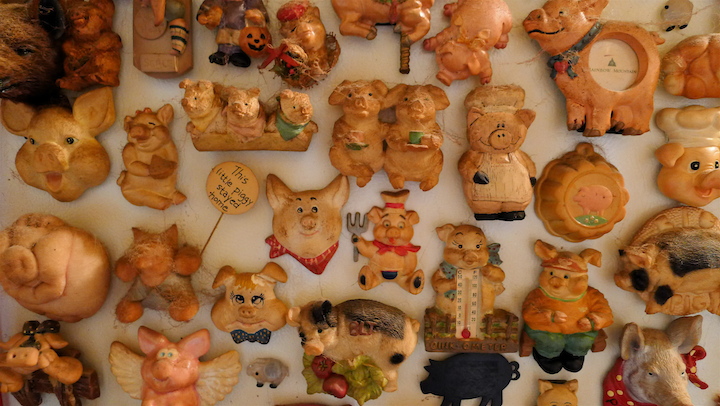










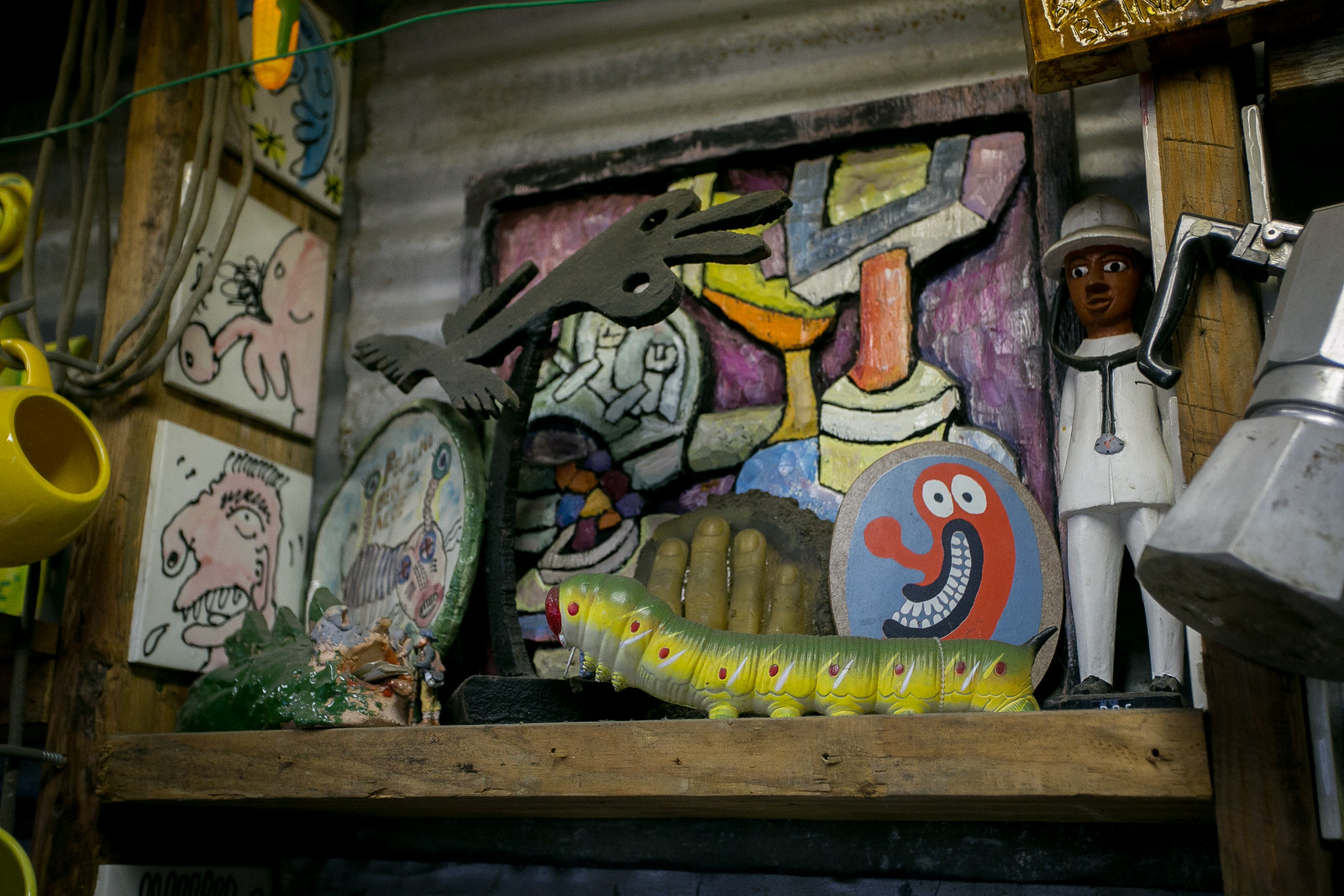




















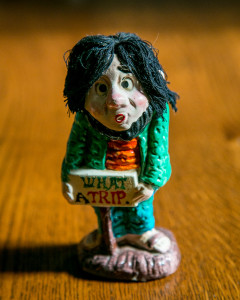
Something about the Rite-Hite all steel kitchen starts to fill me with a strange sort of sadness mixed with melancholy. Oddly, I find it extremely moving, probably in a bad way. Truly visual people, those who communicate with signs and symbols, have a hard time when they see something that seems harmless to others, but to them can drown them with emotional grief. Very weird, but the way it is for some of us. Perhaps that is why so many of us settled here in what was once the center of Western Weirdness. As our support structure of others like us begins to evaporate we can feel very alone by just dwelling on that (now old) seemingly innocent advertisement. In it are a thousand heartbreaks. Yes, at least that many. Fabulous!